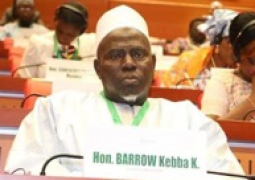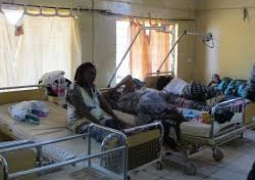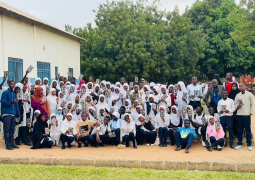Welcoming the gathering, Nyakassi M.B. Sanyang, Statistician General at the Gambia Bureau of Statistics (GBOS), reminded that the survey represents one of their flagship statistical exercises and provides a critical lens through which they understand the structure and functioning of the Gambian labour market.
“As the national statistics office, our role is to provide credible, timely, and policy-relevant data. And I can proudly say that this edition of the Labour Force Survey reflects just that, produced through rigorous methodology, in line with ILO international standards, and with strong coordination across our national statistical system.”
Moritz Meyer, Senior Economist in the Poverty and Equity Global Practice of the World Bank, described the event as another important milestone for the Gambia and will be imperative to inform evidence-based and data-driven decision-making.
“I would like to thank the government of the Gambia, and in particular DSG for the leadership for the Labor Force Survey in The Gambia. I would like to thank GBOS and the technical team for the hard work in designing and implementing the survey.”
He underscored the importance of the initiative, saying more specifically, the Labor Force Survey will provide information on the share of the population being employed, the share of the population being unemployed, the proportion of people working in particular sectors; agriculture, industry, services, but also providing information on the status of employment.
“In addition, the survey will update information on trends and patrons' earnings in labor markets. I'm very glad to see, and I already had a look into the publication which the Gambia Bureau of Statistics prepared, that this data is also going to be disaggregated by gender, by location of residence between urban and rural areas, and by different age groups to provide a more granular picture of the labor market in the Gambia.”
In his launch statement on behalf the PS, Mr. Fabba Jammeh, Director of Employment at the Ministry of Trade, Industry, Regional Integration and Employment (MOTIE), expressed gratitude to the Gambia Bureau of Statistics for completing this critical national exercise.
The evidence produced, he said, will be instrumental in informing government decision-making, particularly within the employment sector.
He explained that as a Ministry responsible for employment policy, these findings are vital, saying it confirms that while job creation efforts are yielding results, their impact is not being felts evenly across all groups.
He pointed out that labour underutilisation (LU3) remains a critical area for policy action at 26.7 percent particularly among women, 34.3 percent and rural residents’ 33.8 percent. These figures, he said, reflects structural challenges that require targeted, gender responsive and location-sensitive interventions.
“Of particular concern is the declining labour force participation among persons with disabilities, which fell from 32.8 to 20.1 percent, and this trend underscores the importance of investing in inclusive employment policies and ensuring that no segment of our population is left behind.”
In addition, he noted that it will also provide information on the status of employment, adding that the labor force survey will update information on trends and patrons' earnings in labor markets.
“I'm very glad to see you all. I already had a looked into the publication which the Gambia Bureau of Statistics prepared and this data is also going to be disaggregated by gender, by location of residence between urban and rural areas, and by different age groups to provide a more granular picture of the labor market in the Gambia.”
He commended the bureau for a job well done, acknowledging the fact that he has been impressed by the documents which can be easily downloaded.
“I would encourage all of you to look into the infographics which I am very happy to see for the Gambia and will give all the citizens an overview of labor markets in the Gambia. Historically, labor markets have been the main driver of household incomes.”
Read Other Articles In National News
Visually impaired man seeks support
Oct 9, 2023, 11:28 AM




